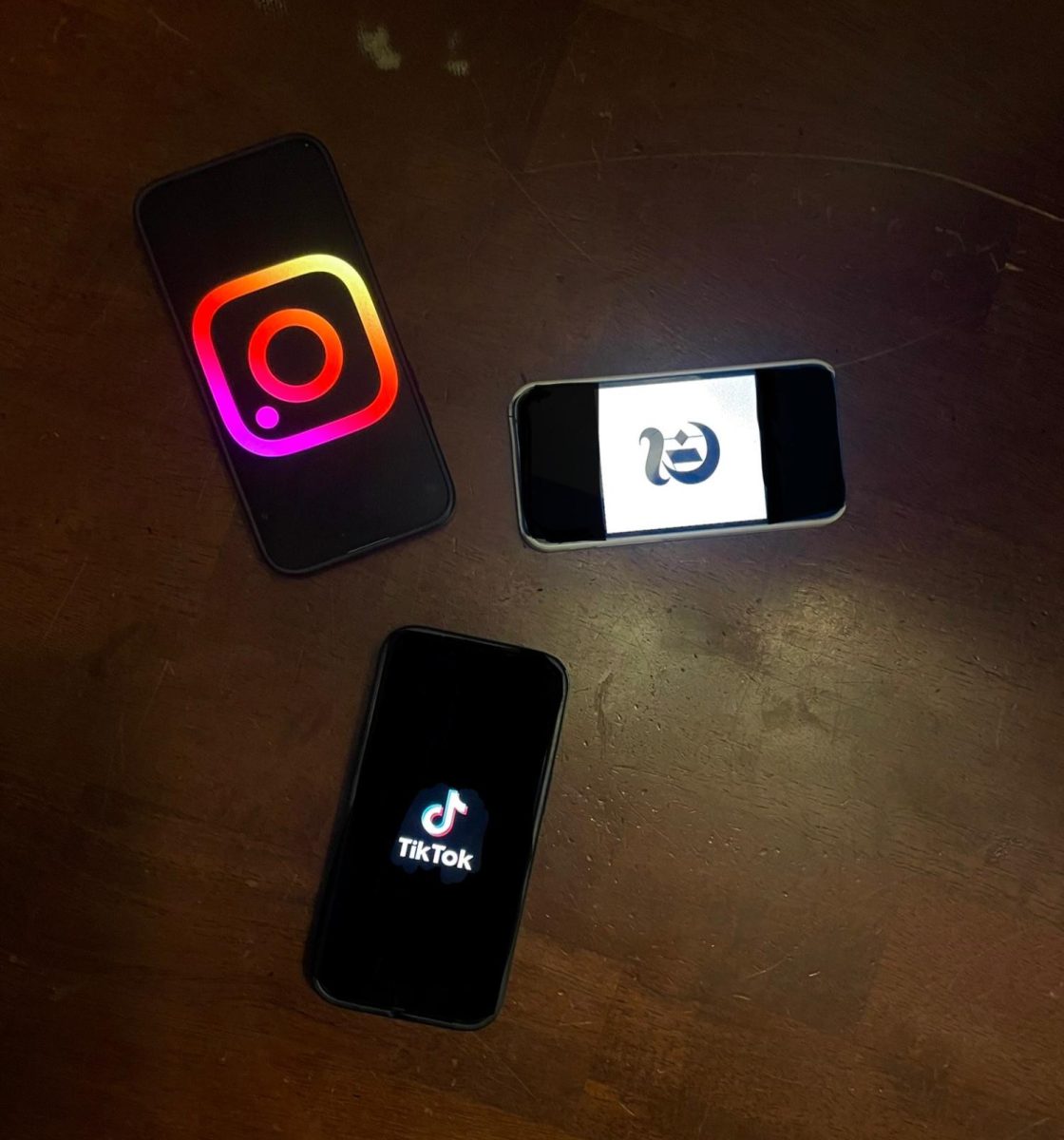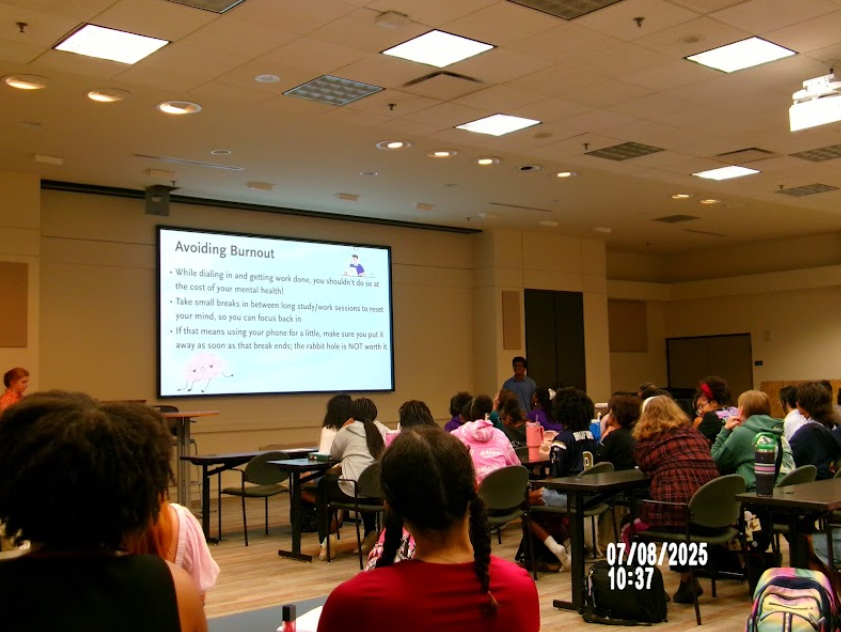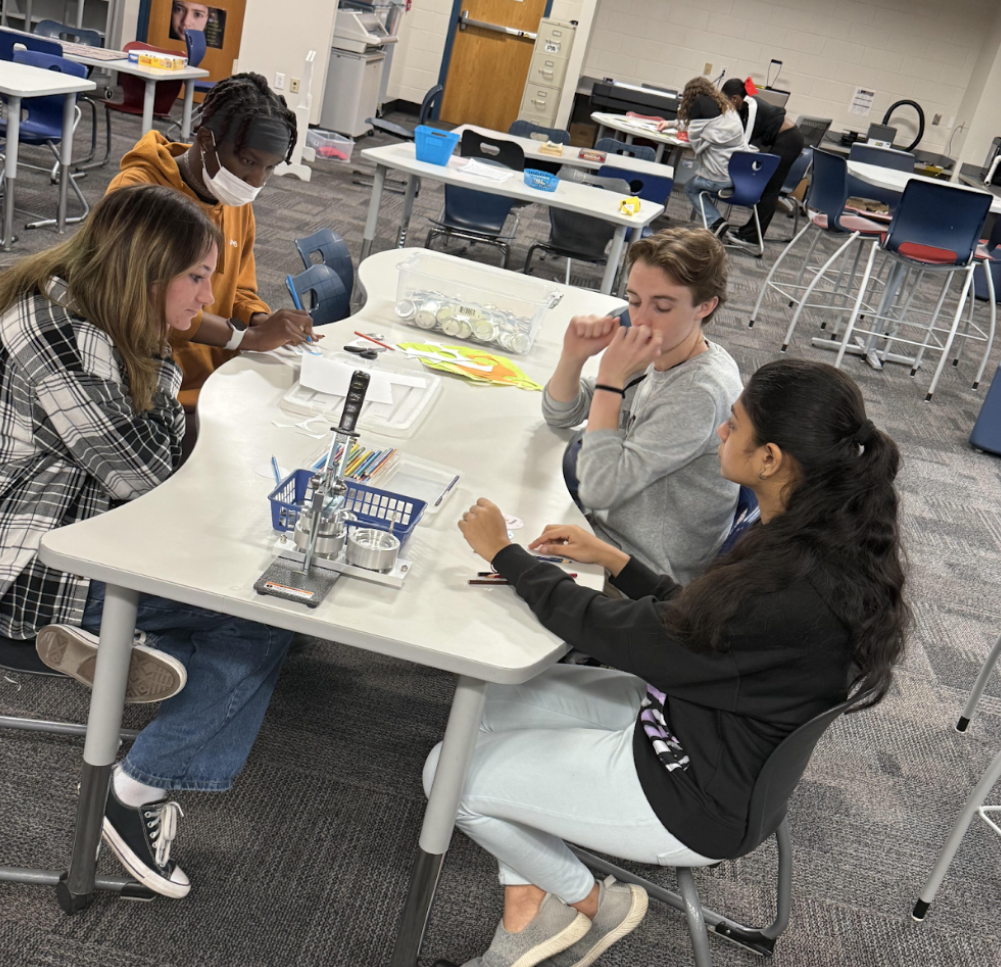From paper newspapers to social media apps, the news industry has changed a lot over the years. As the world becomes increasingly online, news sources have had to transition to online platforms to stay relevant with their users. Younger generations are fueling this change with an increased reliance on social media for their news. A recent survey conducted by The Page found that 65% of Princess Anne students use social media apps like Instagram, TikTok, and YouTube as their primary source of news.
For many young people, convenience is the most important factor when deciding how to consume news. According to the Pew Research Center, the convenience and speed of news on social media are its most compelling qualities, as it can be easily available to consume almost anywhere. Additional important features the respondents of the Pew survey shared were the ability to interact with others over social media, along with the format.
It is indeed easier to pull out your phone, scroll through social media, and happen to come across news recommended to you in your feed than read through a newspaper or sit down and watch the news for an hour. News stories frequently pop up on social media apps, even without the user actively seeking them out.
“I feel like [social media] is just what I use,” said an anonymous respondent to The Page’s survey. “I don’t even mean to use it as a news source, but it just happens.” This is the appeal of social media: the ability to understand what is happening in the world without having to navigate lengthy articles or wordy sentences. Highlights and headlines give us a general sense of what is going on, but they leave out significant details of the story.
While some might not enjoy reading through longer articles written by traditional news sources, junior Abby Colbert explained how she gets her news from outlets like BBC and the New York Times, because they are “typically more professional and stick to the facts.”
“I think [social media] is more likely to be convoluted and is less reliable,” she explained. “There is less fact-checking, and the lines are much more blurred on social media.”
Much of what is posted on the different platforms is intended to grab your attention. This can lead to overdramatized media and “fake news.” Without an interesting caption to a story, many people will just continue scrolling. According to the American Psychology Association, the average attention span of teenagers has decreased from two and a half minutes in 2004 to just around 47 seconds in the last five years.
As attention spans continue to decrease, creators rely on sensationalized news to capture the attention of their consumers. Sometimes, a short headline is all that is needed to form an opinion, but in a story where details are important, headlines can easily be misinterpreted.
Especially when it comes to politics, sophomore Bryce Hallberg, president of PA’s Young Democrats club, explained how headlines are overdramatized in order to make the opposing party look bad. “The typical person could read [the headline] and say, ‘Wow, the other party is horrible.’ But then you do more research, and you find out they’re more normal than you thought,” he said.
Sensationalized headlines are easy to find but harder to verify. English teacher Kerry Kisa, a former journalist, expressed her concerns about the reliability of the news sources on social media. “Way too many [students] get the news from sites that are not what I would call credible,” she explained.
In a different study conducted by the Pew Research Center, 51% of respondents said that inaccurate news is the biggest issue on social media. An article’s accuracy takes a backseat to the speed and efficiency social media provides. “There is a lot of misinformation out on social media, and I know better than to just blindly trust everything I see,” explained another respondent to The Page’s survey. “There are certain accounts that I trust to give me reliable news.”
Social media algorithms also play a role in the heightened polarization and bias on the apps by creating “echo chambers” on “For You” pages across various apps. Echo chambers bounce similar ideas and opinions back and forth across your feed, and it can make your voice seem stronger, as described by BBC News. Social media algorithms log what you like and comment on, and they feed more of the same opinion back to you. Hallberg described how the algorithms of “For You” pages lock you into one form of thinking. “If you like something that’s more biased to one side, it’ll show you more of that [idea],” he said. “You’re not really breaking outside of your comfort zone, so you have a closed mindset. You’re not being shown news from the other side.” When we are exclusively viewing media that perfectly aligns with our viewpoints, it can be hard to “open your mind to the fact that someone else might have another viewpoint,” according to Kisa.
To escape these echo chambers, Kisa recommends reading a wide variety of sources instead of relying on one source. This doesn’t necessarily mean finding viewpoints that are the complete opposite from your viewpoint, because this can lead you back to the echo chamber where your opinions are safer to express. Instead, reading articles and posts from both sides of an argument or party can help you make an informed opinion on the world around you.
When sifting through the millions of posts and reposts across different platforms, it can feel impossible to determine whether a source is reliable. ABC News recommends asking yourself several questions to determine a source’s credibility: who shared this source? When was this created? What account is sharing this? Why would they share it?
Additionally, when deciding where to get your news, is it always best to rely on one or two sources on Instagram or TikTok? Or can you use those accounts as your go-to news sources to help build your news consumption? It is important to stay informed about the world, but next time you pick up your phone, consider where your facts are coming from.














Carol Gladish • Feb 12, 2025 at 7:43 pm
Excellent article! A lot of research went into the writing of it. Quite an accomplishment for such a young writer. Keep up the good work, Ms. Abby!